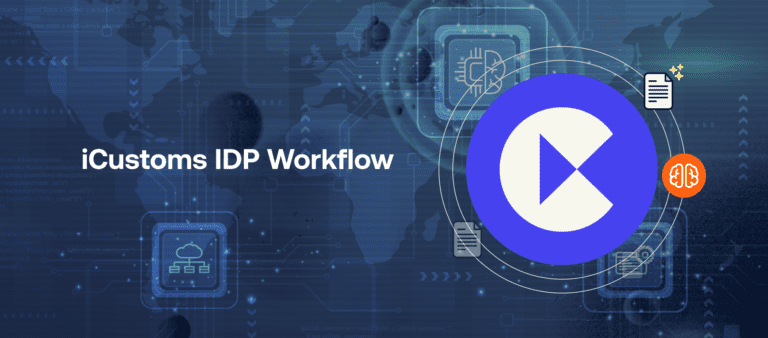Fast & Accurate ENS GB & EU ICS2 Solutions Built for You.
New to AES Ireland? Here's What You Need to Know
-
Freya Jane
- Director of Customer's Success
This blog post will walk you through everything you must know about Automated Export System (AES), helping you simplify your exporting journey.
Understanding AES Ireland
The Automated Export System, or AES, is a new system introduced by Revenue to handle export declarations and summary declarations for goods moving outside the European Union (EU). This system was introduced on 21 March 2023 and has replaced the following declaration systems:
eManifest System
Automated Entry Processing (AEP)
Likewise, Ireland has a specific import system, named, Automated Import System (AIS).
Want to learn more about Automated Import Systems?
Migration from AEP to AES
After the introduction of the Automated Export System (AES), the export declarations made through Automated Entry Processing (AEP) were utterly closed from 22 May 2023.
As of September 4, 2023, it was no longer feasible to amend declarations submitted to AEP. Any changes to AEP export declarations were made by contacting the appropriate Revenue export office.
Automated Export System (AES): What’s new with this system?
AES brings a new Dataset, export declaration structure, and new rules and requirements.
Additionally, AES offers enhanced or new functionality:
Supplementary and simplified declaration
Two types of export declarations (Normal and pre-lodged)
Re-export notification
Improved EMCS interface for products suspended from duty
Caters for export followed by transit
Impact of AES on trade
Prepare for a new method of export declaration if you used the previous AEP system.
- New system, new data: AES requires an additional set of details in a different format.
- Declare now, get informed later: Currently, you have up to 30 days before customs to file your export declaration. A notification called C2 will be required when your goods are prepared for delivery.
- Exporting again? New notification: In the event that you are exporting items from temporary storage again, you need to submit a new notification called A3.
- New procedure for confirming exit: Expect new alerts to be sent since customs is changing how it verifies your goods departing the EU.
New process flow to confirm exit of goods from the EU
Automated Export System (AES) introduces the following messages for exporting goods from the EU:
Arrival at exit (IE507): This message is lodged by the trader at the exit and lets Irish customs know about the goods at the exit point.
Exit notification (IE590): This message is lodged by the carrier at exit when the goods have left the European Union (EU).
Exporting by air and sea
Carriers at the exit must ensure that the goods are customs-declared when moving goods by air and sea. They can use an Application Programming Interface (API), which is provided by Revenue, to check the declaration status. The API used is called Export Release Verification Service (ERVS).
ERVS performs the following functions:
Verify release: Confirms if the MRN is valid and the status is “Released”.
Confirm arrival: Lets users notify Revenue that the goods have arrived at the exit point.
Confirm departure: Confirm exit notification upon departure of goods.
How to start with AES?
Here are three simple steps to begin with AES:
- Register: Before starting, you will need to register your business with Revenue and get an Economic Operator Register and Identification (EORI) number. This number serves as a special identification for your business in the European Union.
- Choose a software provider: For a seamless workflow, choose an AES solution that aligns with your existing system. One such provider is iCustoms, which submits your electronic export declarations with the utmost precision and accuracy.
Using iCustoms can provide the following benefits:
- iCustoms automates repetitive tasks using ML and AI, saving time and resources.
- With features like pre-populated data fields and re-validation, the system ensures accuracy.
- iCustoms ensures compliance with all EU rules and regulations, giving you peace of mind and saving from errors.
- Declare now: After registering, selecting your system, and getting familiar with the interface, you are prepared to begin electronically submitting your export declarations via AES.
The bottom line
AES Ireland might initially seem complex, but with the right knowledge and understanding, your export process in Ireland can be simplified. This system replaced the old eManifest and Automated Entry Processing (AEP) systems and introduced a new process flow to confirm goods’ departure from the EU. This new system brings greater efficiency to the export process in Ireland, providing benefits to both traders and Irish Customs.
FAQs
Do I need a customs declaration for Ireland?
Submitting an electronic customs declaration (safety and security declaration) is crucial for Ireland, which is called the Entry Summary Declaration (ENS).
What do I have to declare at UK customs?
You’ll have to submit a customs declaration at the UK borders for the following cases:
- The goods over the £1,500 threshold
- Excise and restricted goods
- Goods over 1000 kg
Do you need to go through customs from the UK to Ireland?
You will have to go through customs if you are travelling to Ireland from outside the EU or Great Britain.
You may also like:
Simplify AES with iCustoms
Automate tasks, guarantee compliance and ensure data accuracy with our AES software
Subscribe to our Newsletter
About iCustoms
Simplify AES with iCustoms
Automate tasks, guarantee compliance and ensure data accuracy with our AES software

